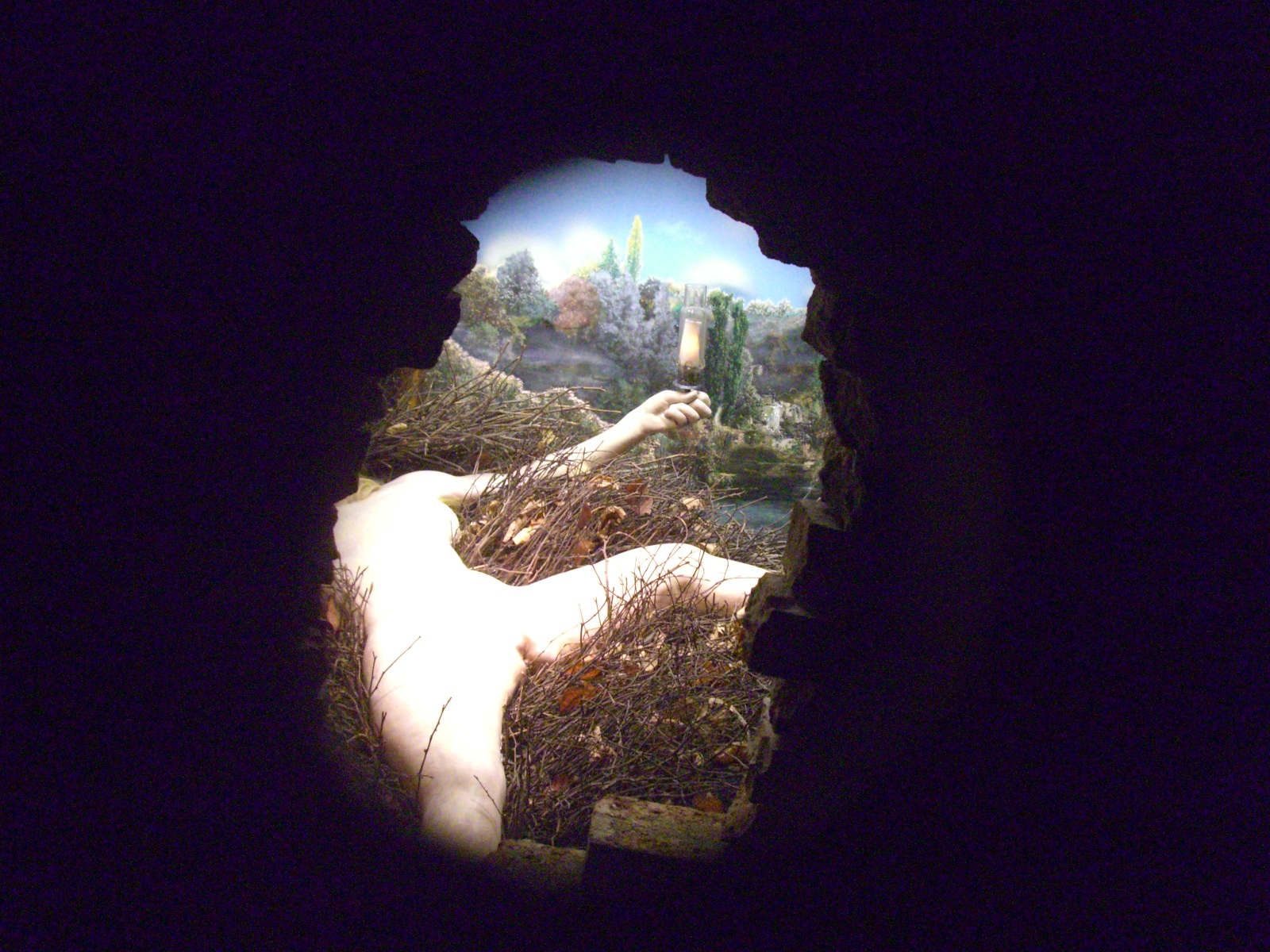What I’m usually doing is deciding what to do now and what to do next. I have a list of tasks. This week, among a lot of stuff, I’ve been working on old poems and it’s boiled down to words, to what sounds best.
I wrote a poem called “At the Duchamp Exhibit” in the autumn of 1973. When Marcel Duchamp died in 1968, he willed his last work to the Philadelphia Museum of Art. He’d secretly been working on it. It was built into the museum’s wall and had its own room. Duchamp had titled it “Étant donnés,” which in French means “Being given.”
When I walked in, I saw a huge wooden door to my left. In the door was a peephole. I looked through, resting my eyes on the two holes. What I saw first was a vagina up close. It belonged to a woman, who was lying on what looked to be uncomfortable branches, gathered sticks and autumn leaves, a figure whose breast, spread legs and left arm I could see, but not her face, because she’d turned that away, not in view. Off in the distance there was a glimmering waterfall, a trick of moving metal and light, and in her left hand she held a lantern that was lit, forming a triangle of sorts between those three points: vagina, waterfall and lantern.


After seeing it, I sat on a marble bench at the back of the museum near an exit that leads out to a view of the Schuylkill River and wrote this poem:
At the Duchamp Exhibit
I don’t want to only come
look at what’s accomplished
and already done
but end all words
all objects inanimate
nailed and hung
in the eyes of anyone
without game or shameful need
write the last poem, Me
then nothing more
I’ll simply leave
unnoticed among the canvases
the peephole where a cunt is
with a waterfall and lantern.
In the early 80s, Philadelphia Eye and Ear Press published “At the Duchamp Exhibit” in a chapbook with ten other poems I called A Few Swimmers Appear. Stephen Spera, the publisher, designed the cover and the layout, and made postcards to promote the book including the one below. A Few Swimmers Appear would never have happened without Stephen Spera.

Over the years, among canvases changed to among the canvases and I am still going back and forth on whether I should write the cunt or a cunt because I like them both: the cunt is specific like I’m pointing my finger at it, “that one there, do you see it?” and if I write a cunt it is one of many, all of them, every one in the world, any one that’s ever been. For awhile I had even changed cunt to vagina, not wanting to offend, but then I thought, No, cunt was what I wrote, cunt is what it is. So I put the word back in. Now a or the is the final dilemma and perhaps forever (or till I’m laid to rest anyway) I will never lay this poem to rest.





